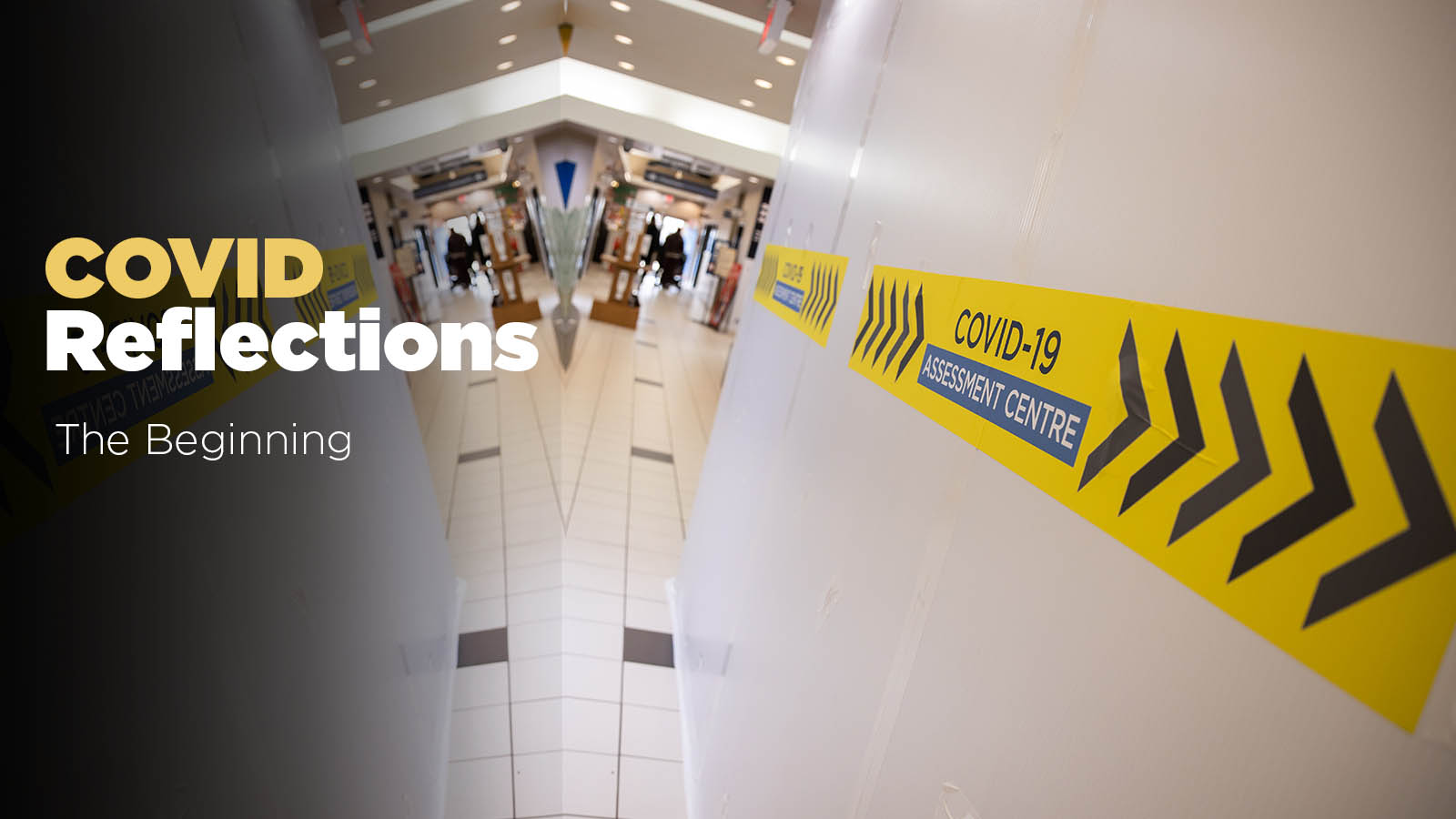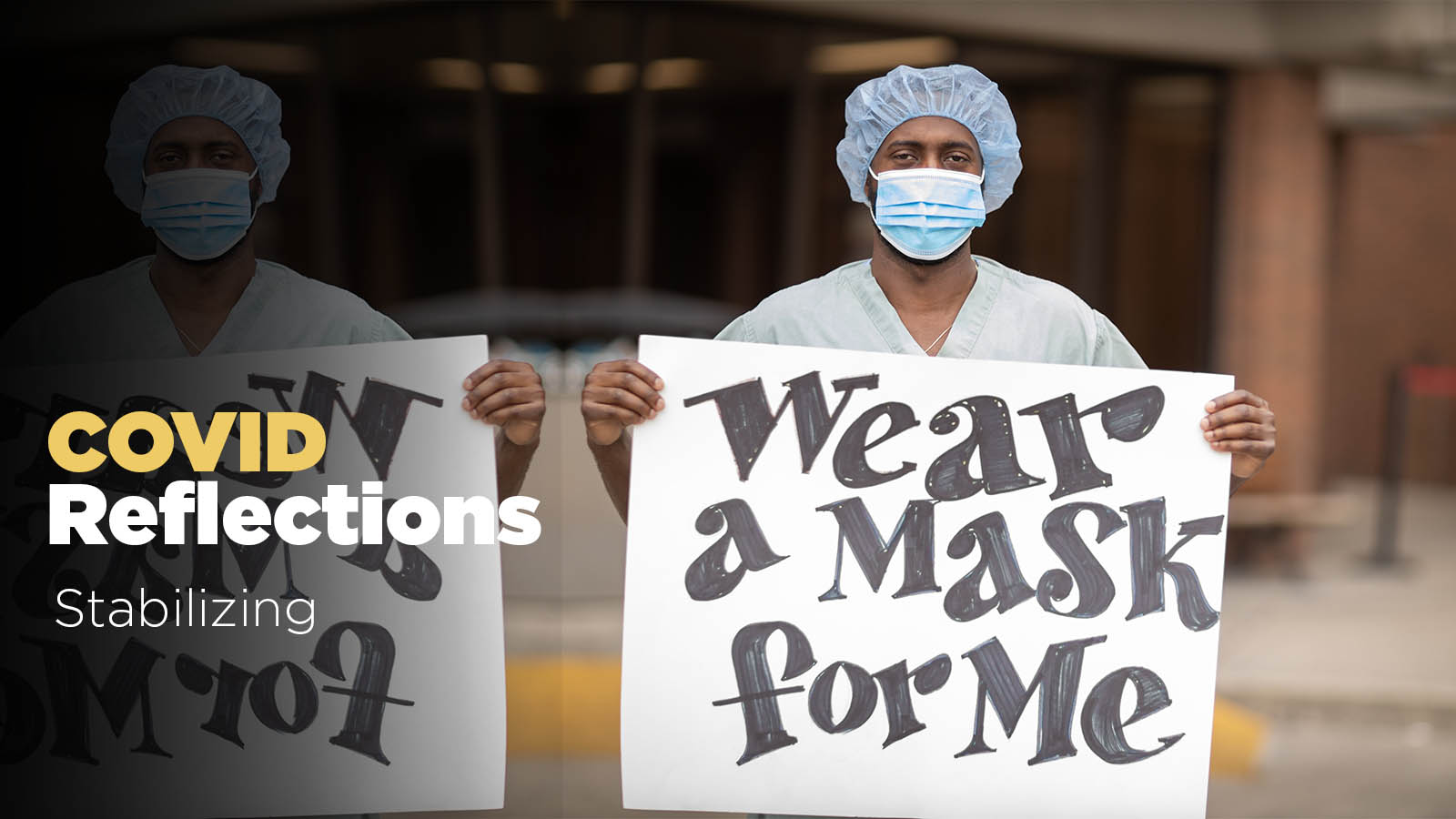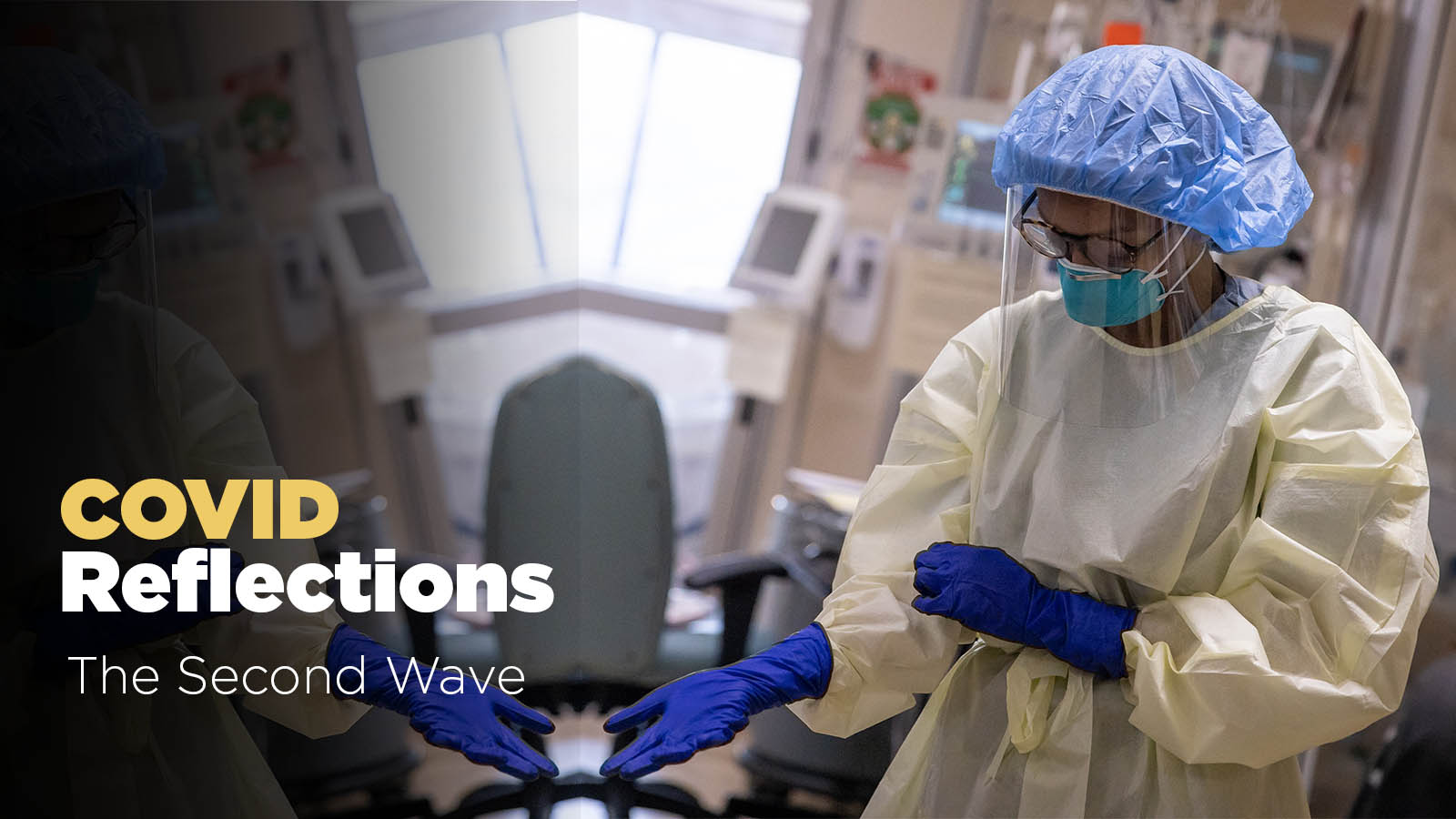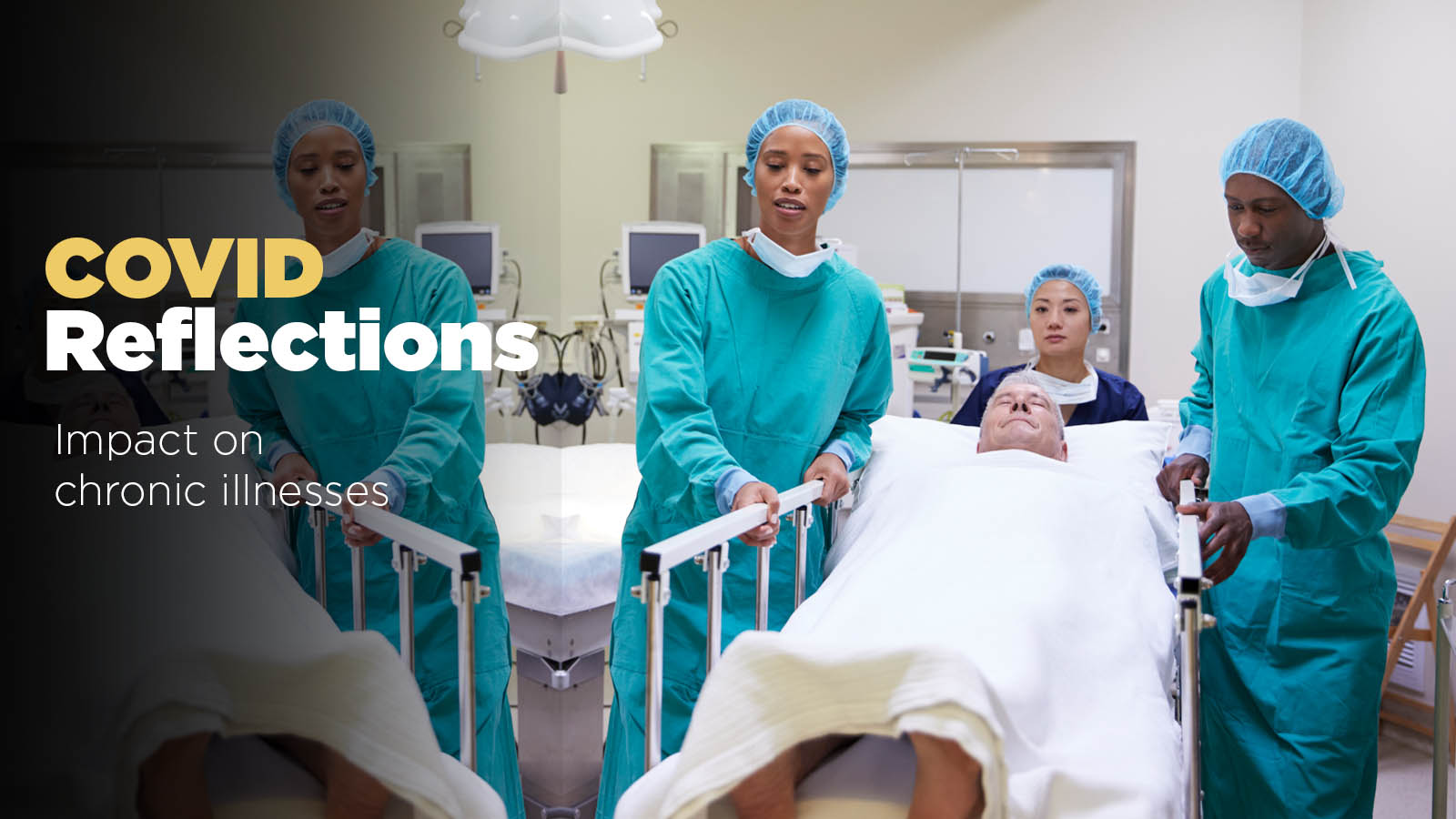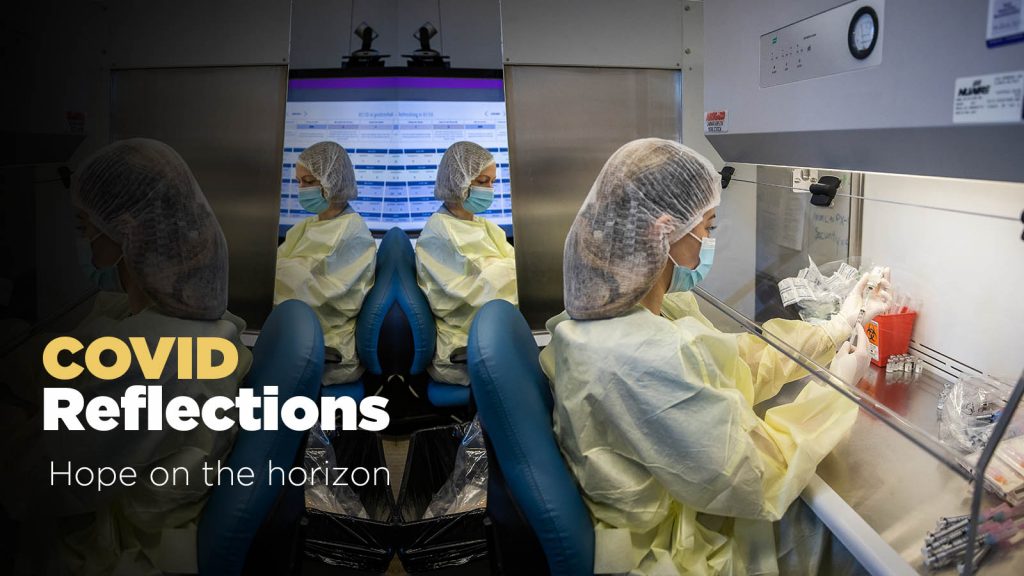
COVID Reflections: Hope on the horizon
March 11 marked the passage of one year since the World Health Organization declared a global pandemic for COVID-19. HHS is commemorating this time by acknowledging the heroic efforts and achievements of our workforce in response to this pandemic. We also recognize the challenges, loss and grief of this past year and extend our deepest condolences to those who have lost loved ones during this time.
These stories highlight milestones over the past year in our organization’s fight against the disease and for our community. This is chapter 4 of 4.
Hope on the Horizon
Most years, December is the most exciting or the most stressful month of the year. The holiday season brings parties, gifts and family time but can also deliver anxiety, stress and loneliness. December 2020 however, was a December like no other.
Many Canadians were becoming tired of COVID-19 restrictions leading to increases in cases and hospitalizations throughout Ontario. Toronto had entered the grey lock-down zone of the province’s colour-coded framework and other regions knew it was just a matter of time before they would follow suit.
The end of pandemic year one would be a tale dominated by the ups and downs of vaccine approvals, supply interruptions and frenzied efforts to ensure delivery to long-term care residents, all healthcare workers and the most vulnerable residents in our community.
Vaccines approved
Even with the pandemic second wave cases climbing, we began to see a glimmer of light at the end of the tunnel. On December 9, news stations and social media were ablaze with the headline: “Health Canada approves Pfizer-BioNtech vaccine.” The Prime Minister and senior government officials quickly held a press briefing to let Canadians know that we would receive our first allotment the following week.
Shortly after the vaccines arrived, the province distributed its portion across municipalities. On December 23, the HHS fixed clinic opened to provide the first doses in Hamilton to long-term care and healthcare workers. The same day, Health Canada approved the Moderna vaccine for use in the fight against COVID-19. While healthcare workers continued to battle rising cases, hope was on the horizon.
Vaccines delivered
HHS worked closely and intensely with partners at St. Joseph’s Healthcare Hamilton (SJHH) and public health to prepare for an influx of vaccine supply. Direction from the province, who spearheads the vaccination process, was dynamic and changing often in response to new evidence and supply considerations. And by the end of the year, the Hamilton portion of the largest vaccination campaign in Canadian history was underway.

Leslie Gauthier
“Our commitment to ensuring that all of the dedicated staff, physician and learners in our workforce who wished to receive the vaccine was unwavering,” says Leslie Gauthier, vice president, clinical support services and surgery.
HHS and SJHH collaborated very closely on executing the vaccination process as seamlessly and equitably as possible while following provincial direction. An HHS and SJHH team of IT specialists, led by Michelle Leafloor, vice president, health information and technology services and chief information officer, created, in record time, a vaccine registration for staff, physicians and learners. The tool launched on January 6, 2021.
Fluctuating supplies
As cases in Ontario and throughout Canada were reaching levels previously unseen and hospital and ICU admissions escalated dangerously, the Province issued an Ontario-wide stay-at-home order effective January 14. At the same time, Pfizer announced that it would be significantly curbing international vaccine allotment, including to Canada, because of a production pause at its Belgian facility.
The stakes were high: healthcare workers were caring for increasing numbers of COVID-19 patients, multiple units at various sites throughout HHS and SJHH sustained outbreaks and now the supply chain of vaccine was seriously interrupted. Senior leaders at HHS, as well as leaders at all levels of government, conveyed their dismay and disappointment to Pfizer about this delay in the supply chain.
Slowly but surely, the provincial lock-down measures started to show initial results. Hamilton moved out of the stay-at-home order and back into the red zone on February 16, 2021. Shortly after, Pfizer announced it would begin increasing vaccine distribution to Canada once again.
In mid-February, Ontario saw vaccine allotments more than triple to 150,000 doses. With the supply chain moving in the right direction, HHS and SJHH were able to schedule vaccine appointments again for staff, physicians and learners in the highest priority sequence.
HHS vaccine clinic

Sue Pantitis
Schedulers at the vaccine clinic began booking 800 appointments a day. Sue Pantitis, one of the scheduler coordinators, recounted that “when I called to let people know they had an appointment they felt like they had won the lottery! I could hear the hope and relief in their voice. They felt that the extra layer of protection the vaccine provides was key.”

Kuldeep Sidhu
Chief of Emergency Medicine Dr. Kuldeep Sidhu, noted that “we have an extremely organized and streamlined process in the clinic which helps to create a positive and welcoming atmosphere for patients. I, along with the interdisciplinary staff in the clinic, are so proud to be a part of the great work being done at the vaccine clinic.”
Virtual care skyrockets
HHS teams stepped up all year long throughout the pandemic to continue to provide care in innovative ways, even beyond the hospital walls. Virtual care – including medical appointments by phone or video conferencing — has skyrocketed at HHS since last March.

Kara Langdon
“We’ve seen a 1,500 per cent increase in the use of virtual care since the pandemic,” says Kara Langdon, who is the manager of the program.
Feedback from patients who have experienced virtual care since COVID-19 has been largely positive. Many appreciate being able to meet with their healthcare providers remotely for certain appointments, from the comfort of their own homes. They’re grateful not to have to travel, and save time and money.
Other forms of virtual care include at-home monitoring, where patients receive technology to bring home following hospital stays or surgery, and are monitored by healthcare providers remotely.
Grief and resilience
Another aspect of care that has been needed all year long is for healthcare providers’ own mental health. The resilience of HHS staff and physicians has been tried and tested throughout the pandemic.

Andrea Frolic
To describe the past year of COVID-19 as difficult or challenging would be an understatement. As Dr. Andrea Frolic, director of the program for ethics and care ecologies, noted in her recent op-ed article, we “grieve the profound ruptures and traumas our frontline and essential workers have experienced…and feel the accumulation of tiny losses that have drained life of simple but durable pleasures.”
The Pause, Reset, Nourish (PRN) resources that the HHS resilience team created at the start of the pandemic was well received throughout the organization and provided all healthcare workers with additional resources to help them with their own resilience through these unprecedented times.
Future generations will recount the truly heroic and compassionate care provided by all hospital workers through the COVID-19 pandemic. Looking back on the first anniversary of the pandemic, we can see the battles of the first year and wonder when we will win the war. Now is not the time to let up on our defenses.
But as our community heads into a third surge of cases fueled by virus variants of concern, underneath it all, hope is here. And it is here to stay.

